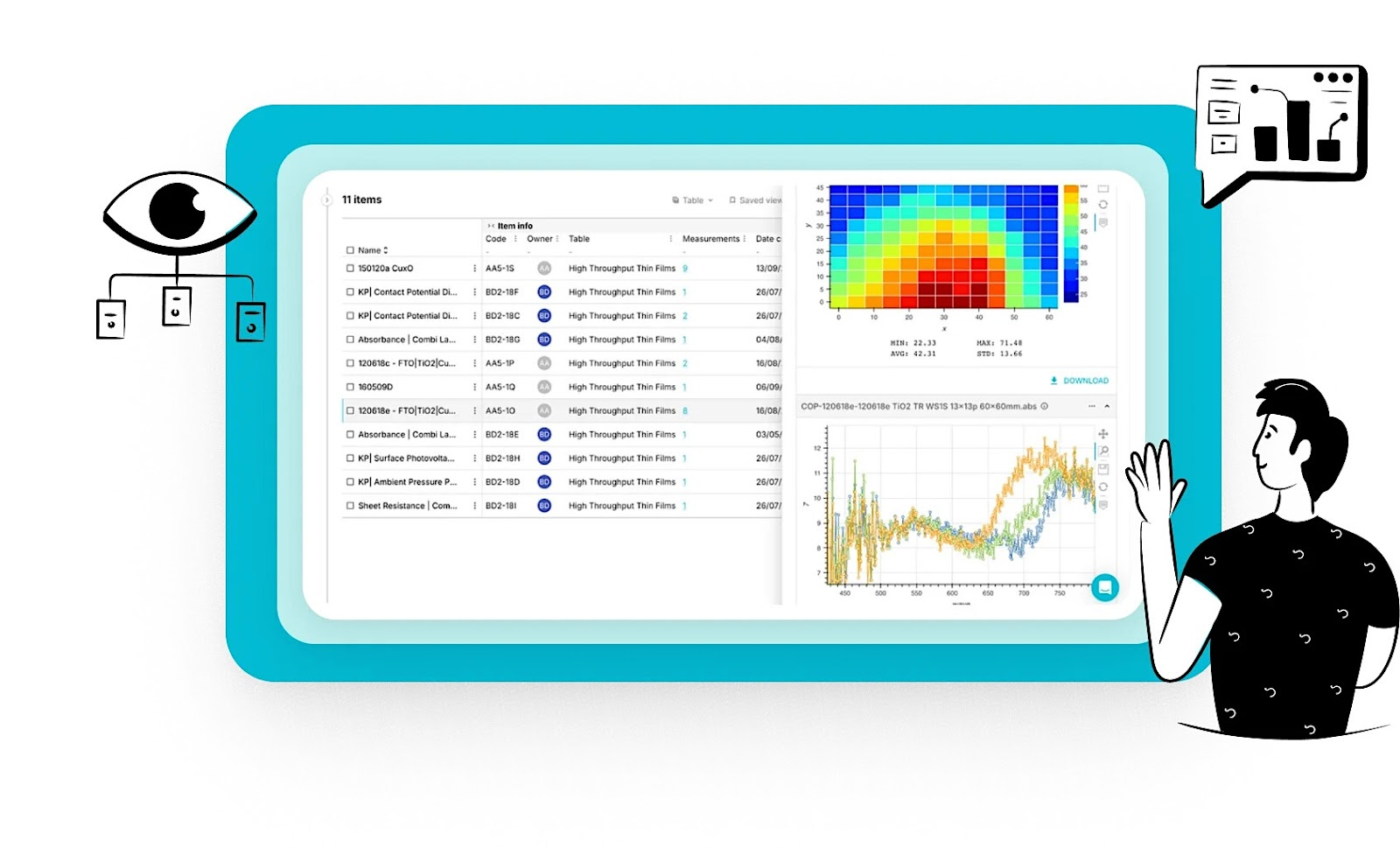20 SDS Requirements You Need to Know
Hazards to humans and the environment abound in the laboratory. Manufacturers, labs, and supply chains work with toxic substances and chemical, biological, or physical hazards every day. Without a consistent way to describe those hazards, an additional layer of danger is introduced: the risk of misinterpreting or overlooking critical details that can keep everyone safe. This confusion hinders safety decisions at crucial junctures, creates legal liability, and increases the likelihood of accidents.


Safety Data Sheets (SDS) exist to solve this communication problem by standardizing how chemical risks and safe-use information are presented. Global regulations require SDSs to follow a structured 16-section format so that anyone from researchers to first responders can quickly find the information they need and minimize harm immediately. But recent surveys indicate that 30% of SDSs include inaccurate hazard warnings that put lab workers at risk.
With different regulatory agencies having their own rules on the content of SDSs, it’s essential for organizations to keep pace with evolving requirements and updated information to ensure laboratory safety.
Meeting SDS requirements is also critical for meeting compliance standards, and for streamlining operations by taking advantage of modern tools that manage SDS data efficiently. Here are the twenty SDS requirements your R&D team needs to be aware of.
Safety Data Sheets (SDS): What You Need to Know
Safety Data Sheets (SDS) are an essential standardized document that outlines crucial information about chemicals to make sure they are handled, used, stored, and disposed of safely. SDSs are critical to workplace safety and regulatory compliance. They provide a comprehensive guide detailing a chemical’s properties, potential hazards, and safe practices.
A safety data sheet helps researchers, lab managers, production teams, and compliance staff to:
- Reduce the risks that potentially hazardous materials pose to their labs.
- Maintain materials safety consistency across multiple labs.
- Give first responders the information they need to act quickly if a hazardous situation develops.
Every SDS uses the same format, which ensures there’s no need to interpret the same hazards in different ways depending on the supplier, source, or document organization.

Why are there SDS requirements, and who’s making them?
Consider a scenario where every chemical manufacturer or distributor releases its own data sheet, with each one containing critical information, but all of which are structured differently or even missing key information.
In this case, it would be difficult for labs and manufacturing environments to keep lab workers safe by comparing safety data across different materials from different manufacturers, integrating the hazard data into electronic lab systems like ELNs or LIMS, or training laboratory staff using these sheets as a consistent reference.
Shockingly, those challenges prevailed for decades when Material Safety Data Sheets (MSDS) were used for documenting chemical safety data. Fortunately, in 2012, most of those issues were solved when the Globally Harmonized System of Classification and Labelling of Chemicals (GHS) was introduced and adopted regionally to create today’s standardized Safety Data Sheets (SDS).
Three main regulatory frameworks create SDS requirements:
1. GHS
The Globally Harmonized System of Classification and Labelling of Chemicals (GHS) is a United Nations initiative to standardize chemical hazard information worldwide. It creates global consistency in hazard classification, labeling, and SDS content by providing a 16-section SDS framework.
The most up-to-date version is GHS (Rev. 7) (2017). This framework is not legally binding unless it is adopted and enforced by regional organizations, such as OSHA and REACH.
2. OSHA
The Occupational Safety and Health Administration (OSHA) enforces the GHS framework at U.S. workplaces through the Hazard Communication Standard (HCS). OSHA’s most recent HCS revisions, effective July 19, 2024, align the U.S. more closely with GHS Rev. 7.
OSHA emphasizes workplace applicability, such as employee access, English-language requirements, and retention timelines, in its SDS requirements. Recent updates added stricter timelines, clarified trade secret rules, and instituted new content requirements.
3. REACH
The European Union’s regulatory framework for chemicals is known as REACH (Registration, Evaluation, Authorisation and Restriction of Chemicals). It was established by EU Regulation No 1907/2006, Annex II. REACH largely adopts the GHS framework but adds several EU-specific requirements.
Under REACH, SDSs must include additional scientific data and regulatory information, including REACH registration numbers. REACH emphasizes supply chain communication and language accessibility across EU member states, and requires hazard information updates to be redistributed to downstream users when significant changes occur.

What are the 20 SDS requirements you need to know?
SDS requirements under GHS, OSHA, and REACH share a fundamental structure: the 16-section standardized format. However, each organization also mandates its own nuances in compliance, update timelines, and regional details for each regulation. Below are the 16 sections required for safety data sheets by GHS, OSHA, and REACH:

Here are the 20 SDS requirements across all three regulatory frameworks:
GHS (Globally Harmonized System) SDS Requirements
- SDS must use the standardized 16-section format. This format is essential for safety information to stay consistent across materials, labs, and countries.
- SDS applies to all substances and mixtures classified as hazardous, whether it’s a physical, health, or environmental hazard.
- SDS must include classification, hazard communication elements (signal words, pictograms, hazard, and precautionary statements), and safety information on handling, storage, disposal, and emergencies.
OSHA (Occupational Safety and Health Administration, USA) SDS Requirements
Note: These requirements reflect OSHA’s updated Hazard Communication Standard, effective July 19, 2024, which aligns U.S. rules more closely with GHS Rev. 7.
- SDS must be prepared for all hazardous workplace chemicals.
- SDS must be written in English (with additional languages optional). This is particularly important since the SDS must be consistent across manufacturers and labs.
- SDS must follow OSHA’s Appendix D content requirements for all 16 sections.
- SDS must be updated within 90 days of receiving significant new hazard information.
- SDS must be readily accessible to employees at all times (paper or electronic).
- SDS (or acceptable exposure records) must be retained for 30 years.
- Revised SDSs must explicitly state long-term health hazards (e.g., carcinogenicity).
- Labels must include standardized GHS elements (signal words, pictograms, hazard and precautionary statements).
- Trade secret protections cannot prevent workers or first responders from accessing hazard information in emergencies.
- Revised SDSs must be resubmitted to emergency response authorities when hazard classifications change.
- Updated hazard classification criteria must be applied (e.g., changes for flammable liquids, combustible dusts).
REACH (Registration, Evaluation, Authorisation and Restriction of Chemicals, EU) SDS Requirements
- SDS must follow REACH Annex II format requirements aligned with the 16-section structure.
- SDS must be supplied for hazardous substances and mixtures, as well as when hazardous ingredients exceed certain thresholds.
- SDS must be updated without delay when new hazard data, REACH registration changes, or authorization/restriction status changes occur.
- Updated SDSs must be redistributed to all recipients supplied within the past 12 months, ensuring clear communication across the supply chain.
- SDS must include the following EU-specific fields:
- REACH registration number
- DNELs (Derived No-Effect Levels, aka human safety thresholds)
- PNECs (Predicted No-Effect Concentrations, aka environmental safety thresholds)
- Exposure scenarios (which must be annexed where applicable).
- SDS must be provided in the official language(s) of each EU Member State where the product is available on the market.
How to Comply with SDS Requirements in Your Lab
MaterialsZone helps labs comply with and manage SDS and its requirements by consolidating SDS data into its Materials Knowledge Center, which enables real-time access, cross-team collaboration, and predictive analytics for risk management. It consolidates data sources from both inside and outside the company into a unified structure using specialized data architecture tailored for materials and processes.

The Materials Knowledge Center transforms SDS from a compliance burden into a strategic advantage and accelerates safe, compliant, and faster product development. This feature allows labs and product teams to improve their efficiency, enhance quality through early detection and correction of issues, and bring better products to the market faster. It also adheres to robust data security and access management (SOC2 Type II compliant) protocols, and is compliant with the SDS requirements set forth by GHS, OSHA, and REACH.
Simplify SDS Requirements with MaterialsZone
Keeping the workplace safe for lab workers and production teams requires a combination of compliance with the rigorous standards built to reduce hazard exposure and a genuine commitment to the health and safety of everyone who works in the lab.
Safety data sheets are a critical building block of this effort by providing labs across different countries with essential information on hazardous chemicals and materials. Having this data presented in the same standardized, globally approved format helps labs handle dangerous materials safely, minimizes the risk to lab staff, and bolsters safety through adherence to SDS requirements.
MaterialsZone simplifies the management of SDS information. Centralizing all SDS documents into one AI-powered platform, regardless of which manufacturer or distributor supplied the material or which lab is using it, keeps these critical documents readily accessible and current for the entire organization. Real-time updates, collaboration tools, and predictive analytics make it easy for labs to identify risks early, prevent them from endangering researchers or production teams, and accelerate the safe development of new products.
Request a MaterialsZone demo today to discover how it enables compliance with SDS requirements and enhances your organization’s lab safety.

.jpeg)
.png)

